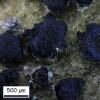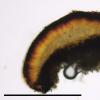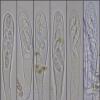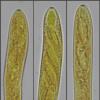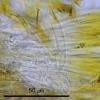
17-12-2013 18:50
 Christian Lechat
Christian Lechat
Chers amis,Pour des raisons d'organisation indépe

13-11-2013 22:03
 Joop van der Lee
Joop van der Lee
Found on horse dung.No mature spores found.But the

14-12-2013 11:11
Stefan BlaserHello everybodyI identified this discomycete as Ps
En hojas de olivo
Salvador Tello,
17-12-2013 21:59
Este ascomiceto lo encontré el 21/01/2013, y no se por donde buscar. ¿Álguien me puede ayudar?
Ascomas formando manchas oscuras, hasta de 1mm el envés de hojas de Olea europaea. Ascas de (63,17) 64,72 - 75,25 (84,80) x (6,68) 7,68 - 9,03 (9,41), Me = 70,88 x 8,25 µm, con el poro apical amiloide. Esporas de (10,52) 11,47 - 15,51 (18,34) x (3,05) 3,29 - 3,97 (4,63) µm, Me = 13,58 x 3,63 µm ; Qe = 3,76, lisas, hialinas. Paráfisis septadas, con el ápice generalmente engrosado, con su mitad superior cubierta por una masa amarillo-anaranjada, mas oscura en el ápice.
Gracias.
Saludos.
Salvador.
Hans-Otto Baral,
17-12-2013 22:59

Re : En hojas de olivo
I think this is Phacidium. Very interesting!
DiCosmo et al. 1983 should here be consulted.
Zotto
DiCosmo et al. 1983 should here be consulted.
Zotto
Salvador Tello,
17-12-2013 23:26
Re : En hojas de olivo
Gracias Zotto, intentaré buscar la información que me dices.
Saludos.
Salvador.
Saludos.
Salvador.
Hans-Otto Baral,
18-12-2013 09:04

Re : En hojas de olivo
It is Mycotaxon 21: 1-234
DiCosmo, Nag Raj & Kendrick (1984)
Available on cyberliber
DiCosmo, Nag Raj & Kendrick (1984)
Available on cyberliber
Salvador Tello,
18-12-2013 20:51
Re : En hojas de olivo
Muchas gracias de nuevo Zotto, lo miraré para ver si encaja con alguno.
Saludos.
Salvador.
Saludos.
Salvador.

